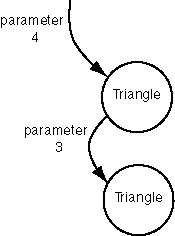New Activation
The statement:
return N + Triangle( N-1 );
must get a value for Triangle(N-1) before the addition can be done.
So the first activation of Triangle() causes a
second activation of Triangle(), this time with
a parameter of 3.
Here is how this is pictured:

